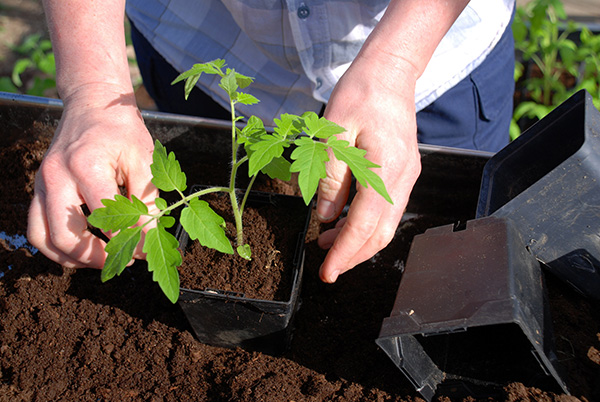Avoid These Plants: What Plants Don't Like Epsom Salt
Avoid These Plants: What Plants Don't Like Epsom Salt
Blog Article
Learn About the Particular Plants That Are Negatively Affected by Epsom Salt Application
Epsom salt, a prominent family treatment for various horticulture distress, is often applauded for its valuable effects on plant growth. Recognizing the particular plants that can be adversely affected by Epsom salt is critical for any type of gardener looking to enhance their plant care regimen.
Roses

Roses, particularly delicate to changes in their environment, can be negatively impacted by the application of Epsom salt. While Epsom salt is frequently used as a fertilizer to advertise plant growth and boost blooming, roses are among the plants that do not respond well to its application. The high magnesium material in Epsom salt can disrupt the uptake of other essential nutrients by the rose plants, causing deficiencies that materialize as yellowing fallen leaves or stunted development.

Tomatoes
Tomatoes, understood for their adaptability in cooking applications, can exhibit adverse impacts when revealed to Epsom salt due to their particular nutrient needs. While Epsom salt is usually proclaimed as a remedy for various plant problems, consisting of bloom end rot in tomatoes, its application can lead to damaging results if not utilized judiciously. Tomatoes are hefty feeders that require a balanced consumption of nutrients, particularly calcium, to flourish. Extreme Epsom salt, which is magnesium sulfate, can disrupt the delicate nutrient equilibrium needed by tomatoes, potentially causing shortages in other crucial nutrients like calcium. This imbalance might show up in signs and symptoms such as stunted development, yellowing leaves, or perhaps minimized fruit manufacturing in tomatoes. Consequently, when thinking about using Epsom salt on tomatoes, it is important to stick to recommended application prices and soil testing to stop unplanned consequences on the overall wellness and efficiency of these precious garden plants.
Peppers
Peppers, revered for their various colors and levels of spiciness, can demonstrate vulnerability to adverse effects from Epsom salt when not used with treatment and consideration for their certain dietary demands. what plants don't like epsom salt. Peppers, coming from the Solanaceae family, call for a delicate balance of nutrients to grow. While Epsom salt is known to improve magnesium levels in plants, excessive application can interrupt this balance, leading to unfavorable effects on pepper plants
When peppers are revealed to high degrees of magnesium from Epsom salt, it can hinder the plant's capacity to soak up other necessary nutrients like calcium and potassium. This inequality might materialize in signs and symptoms such as fallen leave staining, stunted growth, and minimized fruit manufacturing. Furthermore, the too much magnesium can alter the additional reading dirt pH, more worsening nutrient uptake issues for peppers.

Rhododendrons
Provided the level of sensitivity of particular plant types to inequalities triggered by Epsom salt, it is necessary to consider the influence on Rhododendrons, which additionally call for details nutrient degrees to grow. Rhododendrons are acid-loving plants that like acidic dirt problems with a pH variety between 4.5 and 6.0. Epsom salt, chemically referred to as magnesium sulfate, can change the dirt pH and interfere with the fragile balance of nutrients crucial for Rhododendron wellness.

To preserve the ideal growth and health of Rhododendrons, it is critical to avoid the unplanned use Epsom salt and rather concentrate on offering the certain acidic dirt problems and nutrients that these plants require for prospering.
Azaleas
Azaleas, known for their lively blooms and broad variety of shades, are ornamental bushes that belong to the Rhododendron genus. These preferred flowering plants are often located in landscapes, parks, and yards as a result of their appeal and versatility. Azaleas are delicate to adjustments in soil pH degrees, which can considerably influence their growth and overall wellness. While Epsom salt is typically utilized as a treatment for magnesium shortage in plants, its application to azaleas can have adverse results.
Azaleas like slightly acidic soil conditions, and an unwanted of magnesium from Epsom salt can disrupt this equilibrium, leading to nutrient discrepancies and potential toxicity concerns. The wrong application of Epsom salt can result in stunted growth, yellowing of fallen leaves, and overall decline in the health and wellness of azaleas.
Final Thought
Finally, it is essential to be conscious of the specific plants that can be adversely influenced by the application of Epsom salt. Roses, tomatoes, peppers, azaleas, and rhododendrons are some examples of plants that may not benefit from Epsom salt and could even experience harm. It is vital to research study and understand the needs of each plant varieties look at here now before utilizing Epsom salt as a fertilizer to guarantee their wellness and well-being.
Recognizing the details plants that can be adversely influenced by Epsom salt is vital for any garden enthusiast looking to optimize their plant care routine. While Epsom salt is frequently made use of as a plant food to promote plant development and enhance blooming, roses are one of the plants that do not respond well to its application.Excessive use of Epsom salt can additionally result in a build-up of salts in the soil, leading to root damages and dehydration of the rose plants. While Epsom salt is recognized to enhance magnesium levels in plants, too much application can disrupt this stability, leading to damaging effects on pepper plants.
The high salt material in Epsom salt can also dry out Rhododendron roots, triggering additional anxiety and damage to the plant. (what plants don't like epsom salt)
Report this page